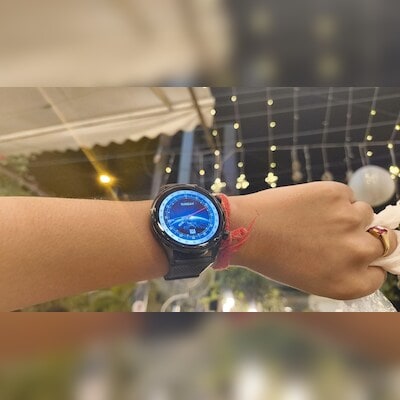Lava eyes larger share in India’s smart wearables amid declining market
With the recent launch of smartwatches, homegrown smartphone maker Lava is looking to gain a strong foothold in the Indian wearables market. The company is eyeing as much as a 20 per cent market share in this segment over the next few years, said a top executive at the firm.
“We decided to enter the wearables segment as there are a lot of synergies between our core smartphone business and the wearables category, right from the supply chain, to manufacturing, to design and research and development. It’s a leverageable strength at all levels, including sales, distribution, and customer service,” Sunil Raina, executive director, Lava, told Business Standard.
The company largely operates in the sub-Rs 30,000 smartphone market and is now vying for a large share in the sub-Rs 5,000 wearables market.
“In the next couple of years, we are aiming for between 10-15 per cent market share in the sub-Rs 5,000 wearables segment,” he added.
This comes after India’s wearable device market declined for the first time ever, by 10 per cent year-on-year (Y-o-Y) to 29.5 million units in the second quarter (Q2) of calendar year 2024 (CY24). The first half of 2024 saw a decline of 4.7 per cent, with 55.1 million units shipped, according to data from the International Data Corporation (IDC).
Analysts say that original equipment manufacturers (OEMs) are facing challenges in luring customers to upgrade due to limited innovation and freshness in newer models. Moreover, vendors are cautious in stocking inventory, focusing on clearing old stock before the festive season begins.
Lava, however, believes that despite a falling market, there is enough opportunity. To bridge this innovation gap, Lava is investing in research and development (R&D) to provide customers with higher-quality products.
The company, which currently has a low single-digit market share in the wearables market, will primarily focus on the sub-Rs 5,000 category. Management at the firm is of the view that this “customer-first” approach will allow Lava to gain a significant market share in the near term.
“We are taking a completely customer-first approach. If we fulfil the needs of the customers, our market share will increase automatically. In FY25, we are gunning for a threefold increase in market share and revenue compared to the previous year for our wearables business,” said Satya Prakash Sati, business head accessories, Lava.
Lava has been focused on creating smart wearables over the past two years, initially starting with audio products before launching its first smartwatch in April this year.
“When we analyse the entire market landscape, we realise that there’s a huge improvement required in the kind of products that are available today. We believe, with our experience of about 15 years in this category, having understood the Indian market very well, we could compete against the current incumbents,” said Raina.
In a bid to improve margins, especially in the sub-Rs 5,000 segment, companies operating in the wearables space tend to use cheaper components, which, in turn, leads to poor product quality. As such, return rates among wearables are high.
“While some are doing a good job, most of the companies have not been able to live up to the expectations of consumers, both in terms of product capability and quality, as well as customer experience,” Raina said.
As the market matures, Raina says that consumers will be more willing to pay a higher price for products, which will result in the market bouncing back.
Lava was among the first smartphone brands to start manufacturing in India. The company currently operates one smartphone manufacturing facility in the country, with a capacity of 42 million units.
Having full control over a localised value chain, Raina says, has given the company a competitive advantage.
“Our products are completely made in India. We have also built the user interface (UI) application in-house…The R&D investment for our wearables business has been far less, because we could leverage the existing infrastructure to build these products. So, the additional investment has not been significant,” he said.
According to Sati, the firm is working on high-end chipsets for a seamless consumer experience and is looking to integrate AI into its smartwatches, which will be available in upcoming products.
“For the audio category, we are working on providing higher-quality ANC than what is currently available,” he said.
Ahead of the festival season, the firm is planning to launch a wider portfolio of wearables, including two products in the smartwatch category and one product in the audio category.
Meanwhile, the company is also eyeing a larger share in the smartphone market. In financial year 2023-24 (FY24), Lava’s smartphone business grew 250 per cent Y-o-Y. The company emerged as the fastest-growing brand in the Rs 10,000-20,000 segment.
“For a very long time, Indian consumers have been looking for an Indian-made option, which is also high on technology and delivers a great experience. We expect our smartphone sales this year to grow at least by 150-200 per cent. We intend to double our smartphone sales this year,” Raina said.
First Published: Aug 19 2024 | 6:53 PM IST
